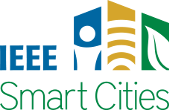August 2021
Smart Cities - August eNewsletter
For a downloadable copy of this eNewsletter, please visit the IEEE Smart Cities Resource Center.
Resource Center Update: Improved user experience for IEEE members! Access/Download free products without a checkout process.
Written by Ahsan Baig, Mike Carvalho, Jim Willows, and Philip Bockrath
In this article we describe our experience from the implementation of a high-availability multi Cloud-based VoIP system to AC Transit, the third-largest public bus system in California. The AC Transit service area includes portions of Alameda and Contra Costa Counties, serving 13 cities and unincorporated areas from San Pablo down to South Fremont. AC Transit also provides commuter service across the Bay to San Francisco, San Mateo and Santa Clara counties. The Service consists of more than 151 bus routes throughout a 364-square mile service area serving 1.5 million people.
Written by Alva Yeung and Charlie Wu
This article outlines the design and implementation of a cyber-physical system (CPS) that provides nutrition management based on individual elderly patient’s health conditions. The system uses a mobile phone-based app to monitor patient’s state along with reference data from electronic patient record (EPR). The backend CPS provides related nutrition dietary recommendation according to nutrition values that specifically addresses dietary restrictions for various chronic diseases such as hypertension and diabetes. The support system can provide patient with an option of either making self-cooking based on what is currently stored in the fridge with the system generated procedures to follow through or through delivery of ready-to-eat meals.
Written by Daniel Tokody, Laszlo Ady, Dalibor Dobrilovic, Francesco Flammini, and Andrea Gaglione
Engineers, like the authors, tend to approach the AI standardization problem from the side of technology. Their first question to ask is whether, in terms of standardization, artificial intelligence should be considered as software or a tangible product.
Written by Himanshu Sharma1 and Ahteshamul Haque2*
The COVID-19 pandemic has significantly affected millions of human lives in the entire world. Worldwide healthcare professionals are working day and night for the treatment of COVID-19 patients. In this critical situation, Artificial Intelligence (AI), Machine Learning (ML) & the Internet of Medical Things (IoMT) technologies can play an important role in efficient vaccine distribution and treatment of COVID-19 patients. In smart cities, smart hospitals are generally equipped with IoMT devices. The IoMT devices are used for sensing, monitoring and control of patient health data, such as respiration rate, blood pressure, blood sugar, heartbeats rate, and other critical health parameters. A typical IoMT scenario consists of an intensive care unit (ICU), various medical instruments, and a wireless body area network (WBAN) connected to the internet. A WBAN consists of sensors and actuators which can be placed on clothes, over and under the human skin. In this article, we outline how IoMT-based healthcare solutions, powered by AI and ML techniques, can be used to combat COVID-19 and future pandemics in support of smart healthcare in smart cities.
To have the eNewsletter delivered monthly to your inbox, join the IEEE Smart Cities Community.
Past Issues
To view archived articles, and issues, which deliver rich insight into the forces shaping the future of the smart cities. Older eNewsletter can be found here. To download full issues, visit the publications section of the IEEE Smart Cities Resource Center.



